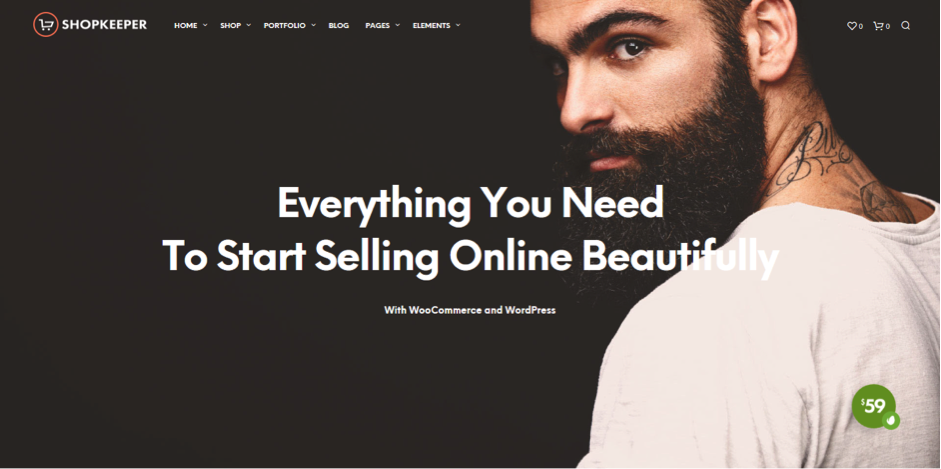How to Set Up Your Multilingual Ecommerce Website (in 5 Steps)

One of the many challenges any ecommerce entrepreneur faces is how to grow revenue streams. If you have the correct infrastructure in place, then setting up a multilingual ecommerce site can help you reach a broader audience quickly and in a user-friendly manner.
Setting up an online store is in itself a huge task, let alone making that ready to sell internationally – which adds a whole new level of complexity. So we also created a video with general tips for starting an international business, make sure to check that one out too!
WordPress – the most used Content Management Systems on the web – is an ideal solution for creating a successful ecommerce site. For one, WordPress is incredibly user friendly and with a number of pre-made themes to choose from and a multitude of plugins to enhance the functionality of your site, you can have an ecommerce store up and running quickly.
This article will guide you through the process of setting up and building your multilingual ecommerce website. We’ll start by helping you setup WordPress, then talk about how to choose an ecommerce theme, before finally suggesting some plugins to add multilingual ecommerce functionality for your site.
1. Choose a Host and Install WordPress
WordPress powers 38% of the web, which translates to over a quarter of a billion websites. If the numbers alone aren’t enough to convince you that WordPress could be the CMS of choice, then there are a plethora of articles that outline the benefits of using it.
Before installing WordPress, you’ll need to choose a host. Hosts vary greatly, so it’s important to take some time to compare the various options available and find the one that best suits your needs (you can find a hosting comparison guide here).
Once you’ve signed up, WordPress is quick and easy to install; plus, most hosts offer excellent support. Should you need help along the way, you can also follow this useful guide.
2. Select a Suitable Ecommerce Theme
Once you’ve installed WordPress, you’ll need to decide on a theme. The theme will provide the overall look of your website and may also deliver additional functionality that isn’t built into the WordPress core.
When it comes to ecommerce sites, there are lots of free and premium themes to choose from. If you don’t know where to start, check out this roundup of ecommerce themes.
If none of those catch your eye, other places to look are the WordPress.org theme repository, marketplaces such as ThemeForest, and independent theme shops such as Elegant Themes.
Here are three ecommerce themes that caught our eye:
Shopkeeper ($59)

This sleek, modern ecommerce theme will enable you to have your store up and running in no time. It’s easy to customize without the need for any code, so is a great option for beginners.
The feature image banner is a great way for your products to stand out and to make a big impact on your website visitors.
The Retailer ($59)

Another great option and a theme that already looks like an ecommerce fashion website. But, don’t be mistaken, this WordPress theme can be customized to sell anything online.
With choices such as horizontal or vertical shop sidebar – your customers can search by popularity, newness, rating, price, or attribute.
ShopIsle (Free)

If you’d prefer to try a free theme, ShopIsle is an excellent choice. This easy-to-use ecommerce theme offers a clean, minimalist look with plenty of customization options.
Again, with an impactful banner image – this theme gives you everything you need to showcase the products you’re selling online.
3. Install a Suitable Ecommerce Plugin
Plugins are WordPress add-ons that add new functionality to your WordPress website. There are literally thousands of plugins available, and it’s important to select them carefully.
When it comes to ecommerce plugins, there are both free and premium options available. This comparison of ecommerce plugins is a good place to start – although you can also check out the WordPress.org plugin repository, and marketplaces such as CodeCanyon.
The most popular ecommerce plugin is WooCommerce, so let’s take a look at it.
WooCommerce (Free)

WooCommerce enables you to easily turn your website into an online store. Currently powering 28% of ecommerce websites worldwide, you can see how well loved this WordPress ecommerce plugin is.
You can sell physical or digital products, and even affiliate goods from online marketplaces. The basic plugin is free, but there are lots of paid extensions available for additional functionality.
4. Translate and Optimize Your Content
If you want to widen your reach and boost sales, making your ecommerce website multilingual is an excellent idea. If you’re trying to decide if this is the right option for you, take a look at this article about the benefits of going multilingual.
One concern that people have when deciding to make their site multilingual is Search Engine Optimization (SEO) – the art and science of improving your site’s performance in search engine results. SEO is affected by a vast and ever-changing list of factors, and some translation solutions can be problematic, or, at worst, not SEO-compatible at all.
However, if done correctly – for example, by using our Weglot Translation plugin – going multilingual won’t have a negative impact on SEO. In fact, Google has outlined best practices for multilingual sites, and Weglot follows them implicitly so that your translated pages will be indexed in search engines such as Google. This means – your ecommerce website will actually be searchable in your new markets.
Weglot (Freemium)

Weglot Translate is a comprehensive translation plugin that both translates and displays the content of your ecommerce website. There’s no need for multiple websites that can negatively impact the searchability of your online store (not to mention is hugely time-consuming). Weglot is a no-code tool which means installing this translation solution is easy for every level.
Weglot works by detecting and translating all the content of your ecommerce website – no matter where the content is coming from. This means, no matter what WordPress plugin you’re using on your store, you can be sure the content will be translated.
With a fast first layer of automatic translation – Weglot makes it effortless to translate the thousands of products you might have on your ecommerce store. You then have the option to manually edit, approve, or order professional translators to fine-tune any of your translations. All your translations are managed through Weglot’s unique dashboard.
Key Features:
- 100+ translation languages available
- Compatible with every WordPress theme and plugin
- Search engine optimized
- Customizable language switch button – without any code
Weglot Translate is free for small websites under 2,000 words, with one translation language. If you need more languages or additional words translated, affordable paid plans are available.
5. Offer Currency Conversions on Your Website
If you’re offering your site in multiple languages, chances are you’ll want to offer multiple currency options as well. Conversions enable people to see prices in a currency they understand, helping them to make a better-informed decision about their purchase.
One of the most popular plugins for converting currency is the free WooCommerce Currency Switcher, which enables your customers to switch to different currencies and view price conversions in real-time.

Conclusion
Making your ecommerce site multilingual can help you reach more customers and boost your sales. However, building a multilingual ecommerce site can be an overwhelming task. Not only do you have to make decisions about which tools to use, you also have to put them into practice.
Using the advice in this article, you can create a highly profitable multilingual ecommerce site. Simply make the most of WordPress and its bevy of handy plugins to build the perfect website. Let’s quickly recap the steps:
- Choose a host and install WordPress
- Select a suitable ecommerce theme
- Install a suitable ecommerce plugin
- Translate and optimize your content
- Offer currency conversions on your website
Interested in making your WordPress ecommerce store multilingual? Start your 10-day free Weglot trial to see for yourself!

















